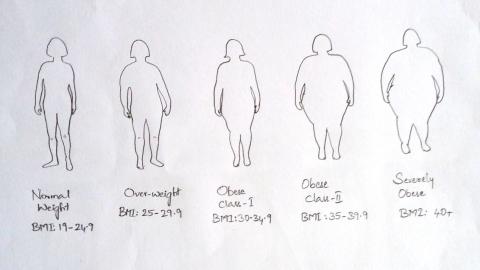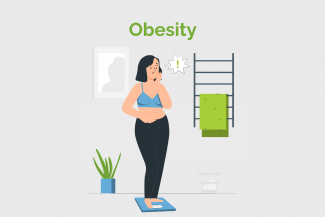Worldwide obesity has more than doubled since 1980. In 2014, more than 1.9 billion adults, 18 years and older, were overweight. Of these over 600 million were obese. 39% of adults aged 18 years and over were overweight in 2014, and 13% were obese. Most of the world's population live in countries where overweight and obesity kills more people than underweight. 42 million children under the age of 5 were overweight or obese in 2013.
Obesity is preventable.

The most simple and reliable method of diagnosing obesity is through measuring the BMI
Range of BMI:
- Below 18.5: underweight
- 18.5-24.9: normal
- 25-29.9: overweight
- 30 or higher: obese
Categories of obesity
- Obesity level l: BMI of 30-34.9
- Obesity level ll: BMI of 35-39.9
- Obesity level lll: BMI of 40 or higher, which some also call as "morbid" obesity
The Edmonton Scale
Obesity experts also use the Edmonton obesity staging system. It takes BMI a step further by relating it to your health. There are five stages:

- Stage 0: No health problems related to weight.
- Stage 1: Mild weight-related health problems like slight high blood pressure and aches and pains occasionally
- Stage 2: Obesity-related chronic disease like high blood pressure, type 2 diabetes, sleep apnea, or osteoarthritis
- Stage 3: Serious weight-related problems like heart attack, heart failure, stroke, or other conditions.
- Stage 4: Severe level of weight-related chronic health conditions that are life-threatening.
Changed
04/Nov/2017
Community
Condition














